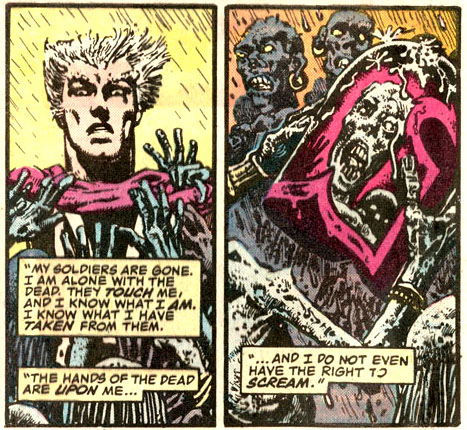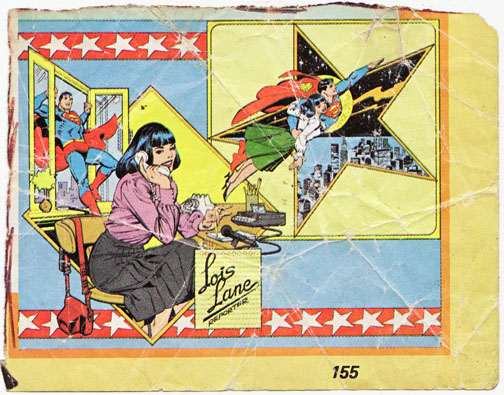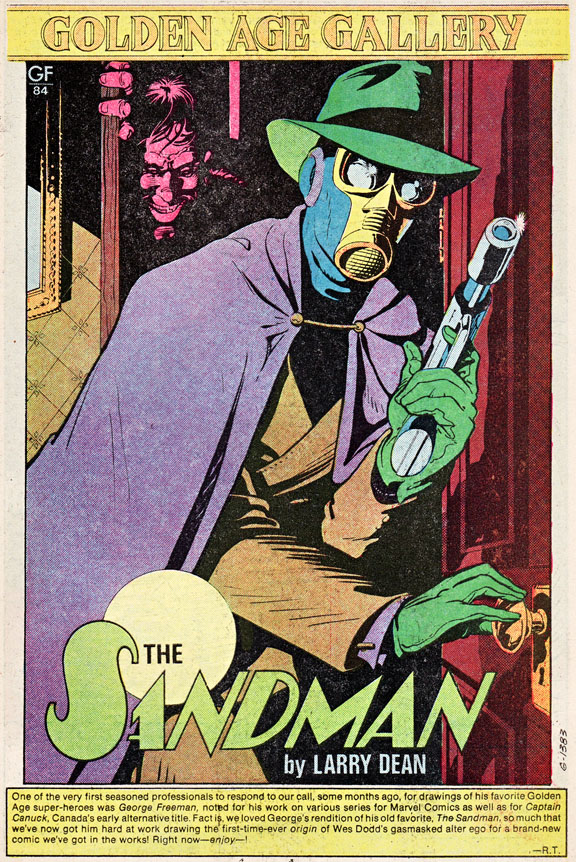
(Warm up drawing I did for a cast of characters I haven’t worked on in a while.)
I recently saw “The Mindscape of Alan Moore” for the first time. It was recommended to me by a close friend who was surprised I had never even heard of it. The documentary came out in 2003, around the same time “The Extraordinary Works of Alan Moore” came out, which I did read at the time. What’s interesting about the film is that while it’s not as in-depth as the book, Moore seamlessly talks about everything from his childhood to his current world view in what seems to be an exercise in efficiency and poignancy. He talks a whole lot about magic here, as well. In fact, he makes a pretty intriguing case for it.

(Panels from the “Heroes for Hope” one shot, drawn by Richard Corben, Marvel 1985).
There were a number of things that resonated with me in watching the film. One topic of note is Moore discussing comics in relation to film (this took place in the pre-Watchmen movie days):
“Whenever anybody talks about comics, they usually make a great deal of the similarities between comics and film. And while I agree that the comic creator who understands cinematic techniques will probably be a better creator than one who doesn’t, I feel that if we only see comics in relation to movies, then the best that they will ever be are films that do not move. I found it, in the mid 80s, preferable to try and concentrate upon those things that only comics could achieve. The way in which a tremendous amount of information could be included visually in every panel, the juxtapositions between what a character is saying and what the image the reader is looking at would be. So in a sense, I suppose that you could say that most of my work, from the 80s onwards, was more or less designed to be unfilmable, which is what I had to explain to Terry Gilliam when he was originally selected as the director on the touted Watchmen movie that was being discussed at the time.”
On another hand, he declares that information is the most valuable commodity on the planet. Measuring our level of information by the number of inventions throughout history, Moore concludes that our culture’s information output and intake has multiplied at an alarming rate (which will result in major changes for us). I, of course, may have butchered the notion he put forth, but he did have this metaphor to give:
“History is a heat, it is the heat of accumulated information and accumulated complexity. As our culture progresses we find that we gather more and more information and that we slowly start to move almost from a fluid state to a vaporous state as we approach the ultimate complexity of a social boiling point. I believe that our culture is turning to steam.”
As far as the actual documentary goes, the production value is weirdly slick and over edited. The images shown have little to no relation to what Moore is saying at any given time (kinda like, ahem, the Magneto image above), and the overall visual tone of the piece is a bit cheesy. What Moore has to say is well worth your time, though. Interestingly, I’ve discovered the latest criticism slung at Moore has more to do with deflating his near legendary status rather than opposing whatever crazy ideas he may have. I digress: rent the movie or just watch a subtitled version here.
Now that we’re on the subject on Old Stuff, I’ve updated a couple of my old “Master Posts” into the “Retrospectives” corner of my site with major help of the very talented Chris Sinderson. I’m going to put all of the older posts there when ever I get the chance, while still adding new entries. For now, feast your eyes on the work of Kevin Nowlan and Jose Luis Garcia-Lopez.
Speaking of possible cartoonist retrospectives, here’s George Freeman’s Golden Age Sandman pin-up (from All Star Squadron #43, March ’85). I’ve been catching up on those original Captain Canuck issues from the 70s and they’re better than I thought. I haven’t been able to check out IDW’s glossy reprints, but hunt the old ones down anyway.
–Fiffe



2 replies on “Reyobigs: Moore documentary & Some Retrospectives”
Freeman or Larry Dean?
Who’s Larry Dean?
Mysteries
“Larry Dean” was really Gardner Fox, his pen name when he wrote a handful of Sandman stories back in 1939. I’m sure Roy Thomas, at his geekiest, put that in.
I don’t think the series they talk about below the pin up ever happened. Freeman went on to do other things, but not any mini series.